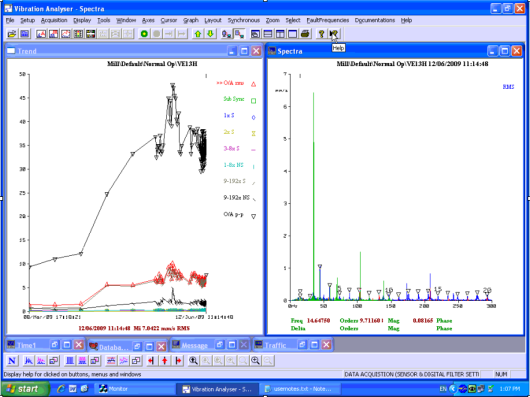|
Is your System failing to detect faults which lead to unpredicted failures?
Our system can automatically separate shaft, gear & bearing fault types.
It can do this because it uses tachometers to precisely measure machine speed during the whole data capture period, and with gear tooth numbers in the database, it can work out which spectral lines have gear harmonics and side bands on them, ie synchronous lines. The remaining lines have non synchronous vibrations on them, and are a good measure of bearing vibration, without needing to know the bearing number and cage type, which effects the number of balls.
The gear fault trend is shown as (9-192x S) (gray trend line with / marks). Clearly the gray sync trend is almost equal to the Overall rms vibration, rose 2 months ago and is now flat.
The bearing fault trend is shown as (9-192 NS) (black trend line with \ marks) and began rising slowly 2 months ago, but is now flat. It is much lower than the gear trend line, BUT it is closer to failure than the gears, and has passed itís alarm limits ( not shown) which are much smaller than the gear alarm limits.
In final failure mode the trends normally rise exponentially, so while the trends remain flat, and with bearing and gear spares are in the store, and repairs can with confidence be delayed till a convenient time for a production shutdown.
read onÖ.

|
